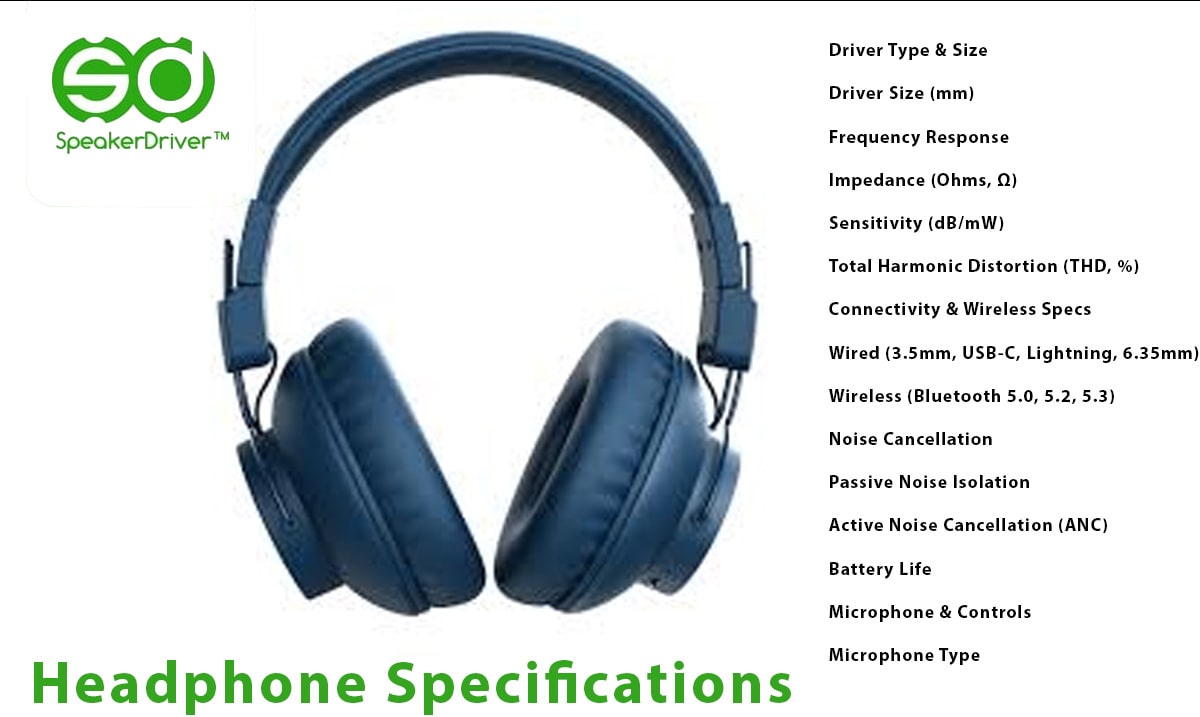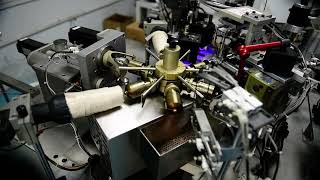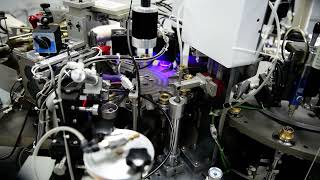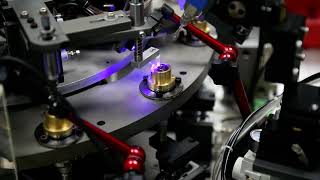Understanding Headphone Specifications: A Comprehensive Guide
Headphone specifications provide valuable insights into how a particular model is built, how it will perform, and how it should be used. Whether you’re an audiophile, a casual listener, or a professional, understanding these specs can help you make an informed decision when choosing headphones.
Key Headphone Specifications Explained
1. Type
The type of headphones determines their style and function. Common types include:
- Closed-back dynamic: Provides noise isolation with a solid shell.
- Open-back: Allows sound to escape, offering a more natural audio experience.
- Active noise-canceling: Uses electronics to reduce background noise.
2. Driver Diameter
The driver converts electrical signals into sound. Larger drivers generally produce better bass and overall sound quality.
- Earbuds: 13.5–15.4 mm
- Canalphones: 8.8–12.5 mm
- Over-ear and on-ear: 30–53 mm
3. Magnet
Headphones use magnets to drive sound. Materials include ferrite, cobalt, and high-performance rare-earth magnets for better efficiency.
4. Voice Coil
The coil moves to create sound waves. Premium options use materials like PCOCC (Pure Copper by Ohno Continuous Casting) and Hi-OFC (oxygen-free copper).
5. Frequency Response
Measured in Hertz (Hz), it represents the range of sounds the headphones can reproduce.
| Range | Impact |
|---|---|
| 20Hz – 20kHz | Standard human hearing range |
| 5Hz – 40kHz | High-resolution audio |
6. Sensitivity
Measured in decibels per milliwatt (dB/mW), sensitivity defines how loud headphones can get at a given power level.
7. Impedance
Measured in ohms (Ω), impedance affects how much power the headphones need:
- Low impedance (16Ω – 32Ω): Works well with smartphones and portable devices.
- High impedance (100Ω – 600Ω): Requires an amplifier for optimal sound.
8. Total Harmonic Distortion (THD)
Indicates the level of distortion at high volumes. High-quality headphones typically have THD below 0.1%.
9. Maximum Input Power
Measured in milliwatts (mW), this indicates the peak power headphones can handle without damage.
10. Noise Cancellation
- Passive noise isolation: Blocks external noise through earcup design.
- Active Noise Cancellation (ANC): Uses microphones to cancel ambient sounds.
11. Weight
Weight impacts comfort, especially for prolonged use. Over-ear headphones tend to be heavier than earbuds.
12. Cable Type
Cables come in various materials and lengths. Premium options use oxygen-free copper for better signal transmission.
13. Connector Type
Common connectors include:
- 3.5mm mini-plug (standard for most consumer headphones)
- 6.3mm standard plug (used for professional audio gear)
- USB-C or Lightning (for modern devices without headphone jacks)
14. Accessories Included
Check the package contents for extra cables, adapters, carrying cases, and spare ear tips.
How These Specs Affect Sound Quality
Bass
Well-balanced bass provides depth without overpowering mids and highs.
Mids
Clear mids ensure vocals and instruments sound natural.
Highs
Good treble response prevents dull or harsh-sounding audio.
Sensitivity and Impedance
High sensitivity and low impedance are ideal for portable devices, while high-impedance headphones benefit from amplifiers.
THD
Low distortion ensures sound remains clean at high volumes.
Conclusion
Understanding headphone specifications helps you choose the right pair for your needs, whether for casual listening, studio work, or gaming. By evaluating factors like frequency response, impedance, and sensitivity, you can find headphones that deliver the best audio experience for your preferences.
For top-quality drivers, consider partnering with SPEAKER DRIVER™️, a leader in innovative and reliable audio components.










